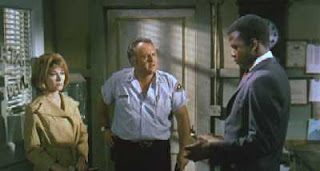Se7en
Se7en did have key traits of a typical buddy cop film. The movie starts by having the two detectives meet and not liking each other at first. Both Detectives Somersett and Mills chose to get past this though for the sake of the case. Somersett is an older cop about to retire but wants to finish this last case before he leaves. Mills, on the other hand, is young and adventurous. This vast personality difference is seen in the chase between Mills and John Doe. Although Doe is shooting at both men, Mills takes after him on foot and engages in an intense shooting stint. Somersett follows after the two fighting men but is a lot more cautious and is far less injured because he is so careful.
Mills has just moved to the city shortly before receiving this case with his young beautiful wife that he’s madly in love with. With the help of Mills wife and intensity of the case, the men begin to realize how crucial each detective is in figuring out the case and begin to form a close bond. This tight bond is seen in the end of the film when Mills discovers his wife has been murdered by John Doe. Although Doe did commit this horrid crime Mills isn’t legally allowed to kill him. While Somerett does try to stop Mills from shooting Doe, he doesn’t make that great of an effort because he sympathizes for Mills even though the cop has gone against the book.


